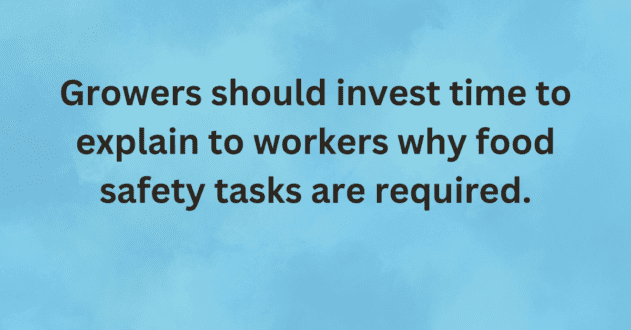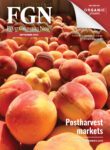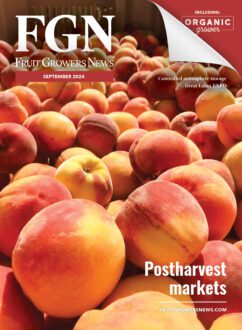
Aug 19, 2024Worker training crucial to food handling safety and is the first-line of defense
Training workers to properly handle covered crops (fruits and vegetables typically consumed raw) is a crucial initial step in ensuring compliance with the Food Safety Modernization Act, from the field to the postharvest processing facility.
“Workers are your first line of defense,” said Micah Hutchison, produce safety technician with Michigan’s produce safety technician program, who is based at the Genesee Conservation District in Flint.
Growers should invest time to explain to workers why food safety tasks are required.

“Washing your hands before you handle produce seems like common sense, but it’s not common sense if you don’t know why you have to do it,” said Elena Rogers, North Carolina State University area specialized agent in fresh produce food safety. Training should be relevant to workers’ jobs and daily tasks.
“If they’re only harvesting, workers may not need to know what’s going on in the packing shed,” Hutchison said.
Food safety practices should be written, implemented company-wide and documented. Everyone who works on the farm should understand them. Owners, managers and supervisors should set good examples by following the practices.

“It’s really about creating a culture of food safety,” Hutchison said.
Finding time for training, especially during harvest, is a common challenge, as are language barriers. Training videos offer visual learning opportunities, and training should be varied to keep it relevant and interesting, Hutchison said.
Posters with pictures and signs can reinforce food safety training and should be placed where they’ll be most effective.
“Written reminders are important, but they must be reinforced,” Rogers said. “Otherwise, the workers think they are decorations.”
Rewards can work better to reinforce good behaviors than corrective action, Hutchison said, and training reviews should be conducted throughout the season or when a problem arises.
Visitors present a challenge for food safety. “What are the expectations?” Rogers said. “Where can they go and where can’t they go?”
Key messages can be communicated through signage or maybe a short video, with the simplest plan being to escort the visitors, Hutchinson said.
— Dean Peterson, contributing writer














